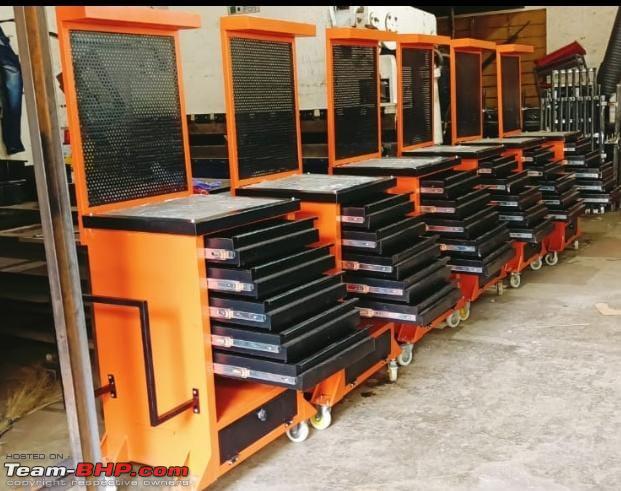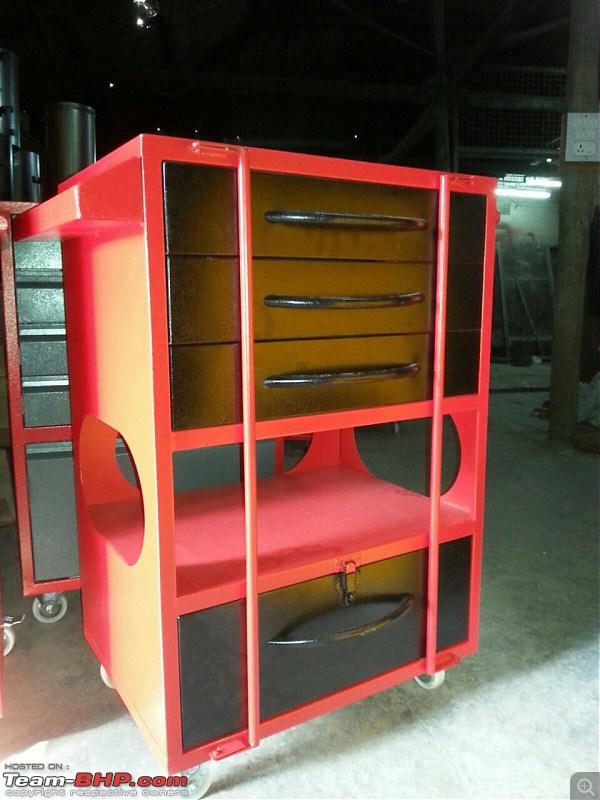Do you even lift ?
Let us talk about vehicle jacks for your cars.
If you are a vehicle enthusiast and/or want to maintain your car by yourself by choosing the DIY route then a good jack is indispensable for you. Frankly speaking, we cannot use the stock mechanical scissor jack (the one provided by your car's manufacturer) for anything else other than removing/replacing the wheels and/or performing minor jobs like replacing the brake pads.
Hence a good high-capacity jack is very much necessary if we want to maintain our car by ourselves. When choosing such jacks our options are practically limited to two basic types - the mechanical ones and the hydraulic ones.
Mechanical jacks : These are cheaper and usually come in the stock scissor shape or the higher capacity bottle shape. The bottle-type mechanical jacks are usually cheaper and last for a long time without almost any maintenance but these are prone to tilting and that is probably their only disadvantage apart from being cumbersome to use.
Hydraulic jacks : These are more expensive and are usually of two types - bottle type and floor/trolley/crocodile type. The bottle-type hydraulic jacks are compact but these are prone to tilting as well. The floor/trolley/crocodile type hydraulic jacks usually do not tilt but can definitely slip if used incorrectly especially when used in conjunction with jack pads for pinch welds at the jacking points found in monocoque chassis cars. Low-profile versions of floor/trolley/crocodile type hydraulic jacks are definitely available but those are substantially more expensive and intended for cars with very low ground clearance. These usually have dual pistons in a single cylinder instead of the single piston in a single cylinder in the regular ones which are not low-profile.
Choosing the capacity of the jack :
A good place to start is by looking at the unladen weight (minimum weight) and laden weight (maximum weight) of your car by as mentioned in the Form 22 for your car or in its registration certificate details on the Vahan website of the Government of India. You can also get your car weighed at any weigh-bridge and these are also known as Dharam Kaanta in the Northern and Eastern regions of India. Sometimes some toll plazas and bridges also have a display showing the current weight of your car. Please note that the weights of different cars or different variants of the same car will always be different.
My 2017 1.6 Petrol AT Creta's laden weight is approximately around 1730 kgs. Hydraulic jacks typically lose 25% of their capacity over their lifetime and I chose to incorporate an additional margin of error to the tune of 25% more which brought the required capacity up by a total of 50% to 2595 kgs. The closest available capacity of a jack above 2595 kgs is 3 ton. It is very important to note here that 1 ton approximately equals 907 kgs and 1 tonne equals 1000 kgs. From what I have seen, the 3 tonne rated jacks (both mechanical and hydraulic) are somewhat of a rarity and even their replacement/spare parts are somewhat difficult to find here in India. The ones rated in "tons" instead of "tonnes" have no such issues. Even though the entire weight of the car will never be on the jack, it is always good to have a safety margin keeping the worst possible condition in mind which explains the additional and apparently unnecessarily high load-bearing capacity of the jack.
Hydraulic jacks usually do not come ready to be used at 100% capacity from the manufacturer/seller due to various logistical issues. The buyer usually has to fill it up with proper hydraulic jack fluid and then bleed out the air before using them. This process is usually very easy and almost anyone can do it. Instead of a proper hydraulic jack fluid, we can also use hydraulic power steering fluid or hydraulic heavy lifting machinery fluid like those in JCB excavators but it is absolutely not recommended to use other fluids like engine oil, brake fluid, alcohol, glycerin, etc. Also, the jack's friction points need to be properly lubricated before using it for the first time.
The regular (not low-profile) 3 ton floor/trolley/crocodile type hydraulic jacks typically weigh around 20-30 kilograms based on the metal used. And they can be kept under the front passenger seat of your car if there is no space available in the boot area.
WARNING : Do not get under the car when it is resting on the jack alone. Always place the car on properly rated good quality jack stands before going under the car unless the car's all four wheels are touching the ground. And always engage the handbrake or the parking brake tightly before using the jack under the car. Additionally, please use wheel chocks before using the jack in case you intend to work on the brakes or if you intend to lift the rear of the car.
After much brainstorming and weighing the pros & cons of all the easily available jacks, my son procured a 3 ton rated floor/trolley/crocodile type heavy-duty hydraulic trolley jack for my 2017 1st generation pre-facelifted petrol 1.6 AT Creta for approximately INR 4000 in early 2018 from a local shop here in Kolkata. Good hydraulic jacks are made by brands like Groz, Elephant, Big Bull, Pittsburgh, Harbor Freight, Husky, etc. You can definitely get good generic ones too.

The one that we got has a minimum height of 140 millimetres and a maximum height of 470 millimetres with the weight being approximately 25 kilograms. Using it is very easy. All we have to do is to connect the two parts of the handle properly and mount it on the jack's square drive. Before we start to pump the handle, it is very important to turn the valve closing mechanism by turning the handle in a clockwise manner to the maximum extent to completely close the pressure release valve or else the jack will not lift. When we need to lower the car, we can slowly open the valve by turning the handle in an anti-clockwise direction. Here are a few images for now :-
Lifted to its maximum position 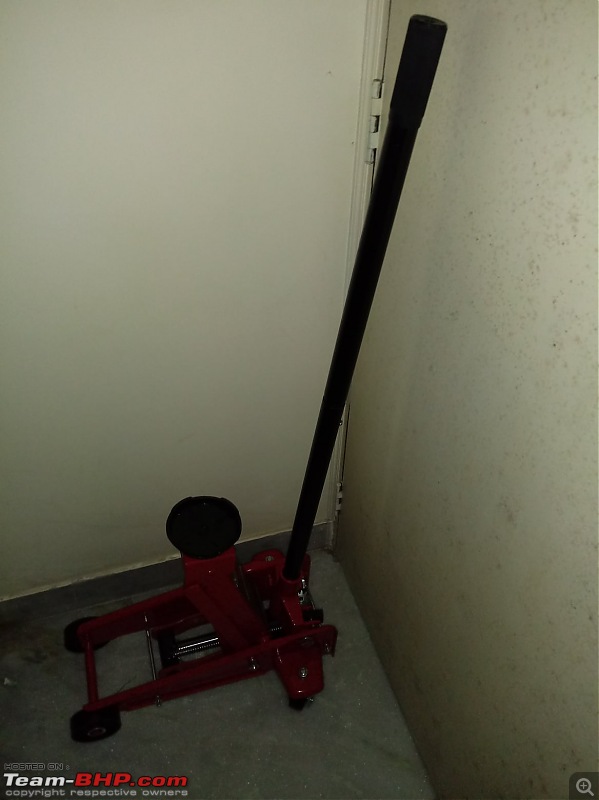
Fully lowered

I hope that you enjoyed going through this post and I wish you all happy and safe drives ahead

 (2)
Thanks
(2)
Thanks
 (1)
Thanks
(1)
Thanks
 (3)
Thanks
(3)
Thanks

 (11)
Thanks
(11)
Thanks
 (10)
Thanks
(10)
Thanks

 (1)
Thanks
(1)
Thanks

 (1)
Thanks
(1)
Thanks
 (7)
Thanks
(7)
Thanks
 (1)
Thanks
(1)
Thanks
 (1)
Thanks
(1)
Thanks








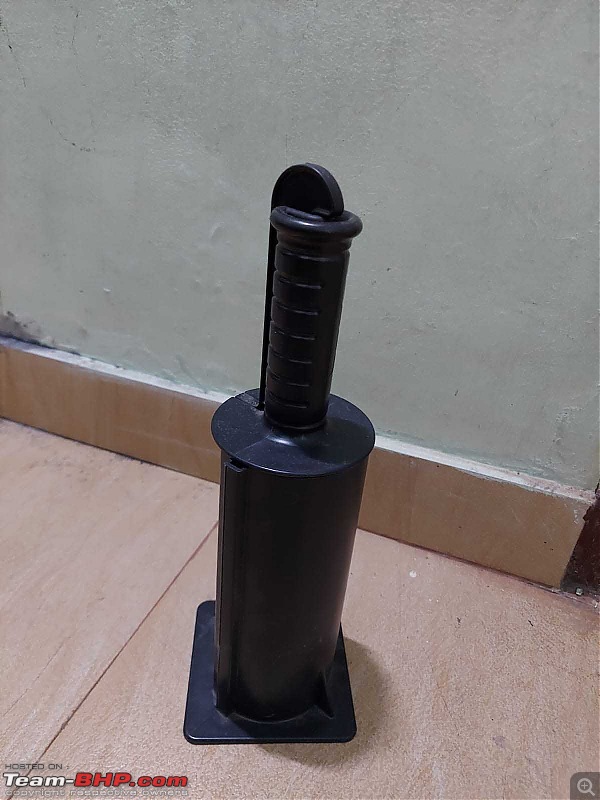




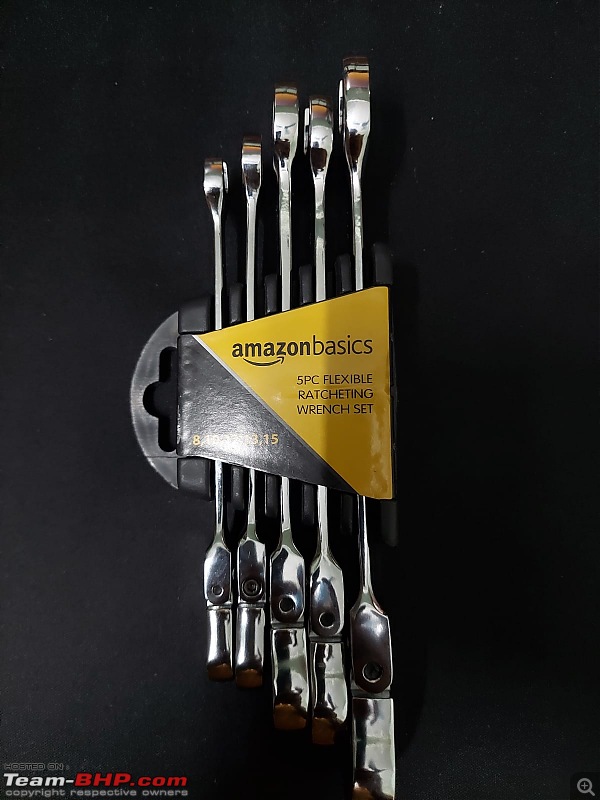

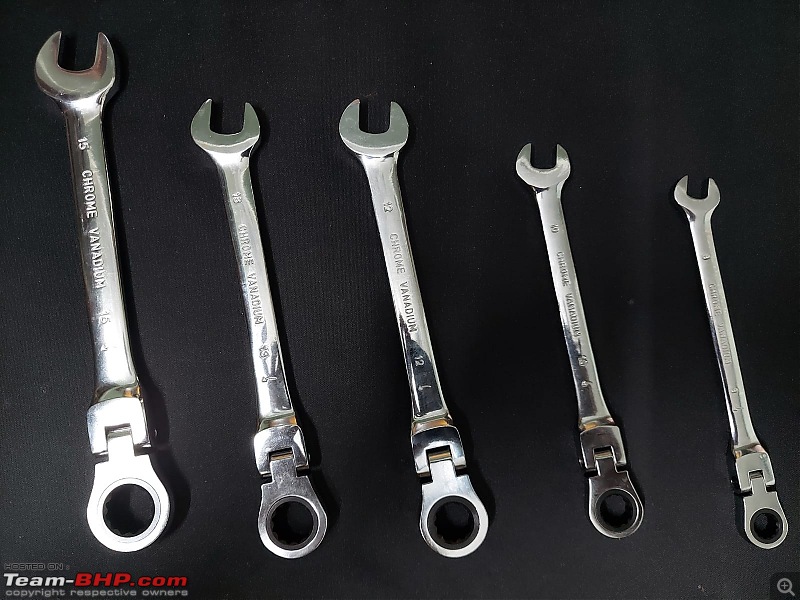

 Well here it is! They made a hole at one end for bolt to pass through.
Well here it is! They made a hole at one end for bolt to pass through. 





